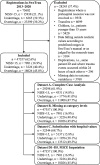On Scene Injury Severity Prediction (OSISP) model for trauma developed using the Swedish Trauma Registry
- PMID: 37814288
- PMCID: PMC10561449
- DOI: 10.1186/s12911-023-02290-5
On Scene Injury Severity Prediction (OSISP) model for trauma developed using the Swedish Trauma Registry
Abstract
Background: Providing optimal care for trauma, the leading cause of death for young adults, remains a challenge e.g., due to field triage limitations in assessing a patient's condition and deciding on transport destination. Data-driven On Scene Injury Severity Prediction (OSISP) models for motor vehicle crashes have shown potential for providing real-time decision support. The objective of this study is therefore to evaluate if an Artificial Intelligence (AI) based clinical decision support system can identify severely injured trauma patients in the prehospital setting.
Methods: The Swedish Trauma Registry was used to train and validate five models - Logistic Regression, Random Forest, XGBoost, Support Vector Machine and Artificial Neural Network - in a stratified 10-fold cross validation setting and hold-out analysis. The models performed binary classification of the New Injury Severity Score and were evaluated using accuracy metrics, area under the receiver operating characteristic curve (AUC) and Precision-Recall curve (AUCPR), and under- and overtriage rates.
Results: There were 75,602 registrations between 2013-2020 and 47,357 (62.6%) remained after eligibility criteria were applied. Models were based on 21 predictors, including injury location. From the clinical outcome, about 40% of patients were undertriaged and 46% were overtriaged. Models demonstrated potential for improved triaging and yielded AUC between 0.80-0.89 and AUCPR between 0.43-0.62.
Conclusions: AI based OSISP models have potential to provide support during assessment of injury severity. The findings may be used for developing tools to complement field triage protocols, with potential to improve prehospital trauma care and thereby reduce morbidity and mortality for a large patient population.
Keywords: Artificial Intelligence (AI); Clinical Decision Support System (CDSS); Field triage; On Scene Injury Severity Prediction (OSISP); Prehospital care; Trauma.
© 2023. BioMed Central Ltd., part of Springer Nature.
Conflict of interest statement
The authors declare no competing interests.
Figures


References
-
- National Association of Emergency Medical Technicians NAEMT . PHTLS: Prehospital Trauma Life Support. 9. Burlington: Jones and Bartlett Learning; 2020.
-
- World Health Organization. Injuries and Violence: the Facts 2014. Geneva: World Health Organization; 2014. Available from: https://apps.who.int/iris/handle/10665/149798. Cited 2022 Nov 17.
-
- Lennquist S. Traumatologi. 2. Stockholm: Liber; 2017.
-
- Magnusson C, Axelsson C, Nilsson L, Strömsöe A, Munters M, Herlitz J, et al. The final assessment and its association with field assessment in patients who were transported by the emergency medical service. Scand J Trauma Resusc Emerg Med. 2018;26(111):1–10. doi: 10.1186/s13049-018-0579-x. - DOI - PMC - PubMed
-
- Sasser SM, Hunt RC, Faul M, Sugerman D, Pearson WS, Dulski T, et al. Guidelines for field triage of injured patients: Recommendations of the national expert panel on field triage, 2011. Atlanta, GA, USA: Centers for Disease Control and Prevention (CDC); 2012. The Morbidity and Mortality Weekly Report (MMWR) Series: Recommendations and Reports 61(1):1–20. Available from: https://pubmed.ncbi.nlm.nih.gov/22237112/. Cited 2022 Nov 17. - PubMed
Publication types
MeSH terms
LinkOut - more resources
Full Text Sources
Medical

